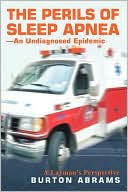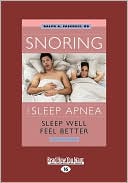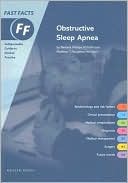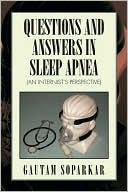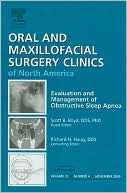Another good question posed from a reader. If you haven't read "What's the difference between CPAP and BiPAP?", you may want to do that before continuing with this topic. Now, off to the topic at hand.
APAP stands for Auto Positive Airway Pressure. By the term "Auto", the manufacturer means self adjusting, self titrating, auto adjusting, etc. Modern APAP machines can be programmed to auto adjust in a pre-determined range. For example if it is found that the optimal range for a certain patient is 8 to 12, then the machine's output pressures will range from 8 to 12. This brings us to why it has a range and when will it "auto adjust".
We will continue with the patient example just mentioned. When the patient whose ideal PAP range is 8 to 12, turns on his/her machine at home, it will start at CPAP 8 (I'll get to BiPAP and APAP in a moment). As the person sleeps, if the APAP machine senses snoring or breathing events like apneas or hypopneas, the APAP machine will increase the pressure by 1. For our example, the APAP machine will increase to CPAP 9. If snoring, hypopneas, or apneas are continuing, then the machine will increase the pressure up to CPAP 10 and so on, up to the upper limit. The upper limit in our case is 12. The APAP machine will usually allow a few minutes to elapse before making each change. It takes a little time to see if the new pressure is effective. Now, suppose our example patient was auto adjusted to CPAP 12 and is now breathing freely for some time without snoring, hypopneas, or apneas.At this point, the APAP machine will decrease the pressure by 1. The new pressure is now CPAP 11. If the patient continues to breathe without snoring, apneas, or hypopneas, then the APAP machine will decrease the pressure by 1 again, bringing it down to CPAP 10. This process may continue, depending on the patients perfomance down to the minumum of CPAP 8.
Auto BiPAP machines are very similar. They have pre-set ranges for IPAP and EPAP typically with a spread of 3 or 4. As an example, say a patient's ideal BiPAP range is 10/6 (IPAP=10 EPAP=6) to 13/9 (IPAP=13 EPAP=9). When turned on, the machine will start at 10/6 and, if necessary, increase from there to 11/7. If warranted again, increase to 12/8. If snoring and breathing events continue, the maximum will be reached at 13/9. Just like the APAP machine, the AutoBiPAP will decrease pressure as needed.
There is much more to APAP and AutoBiPAP machines and their software. These were only very simple examples to illustrate the basics of what they do.
Keep the questions and comments coming!
 It was summertime, and I was sitting on a plane headed to Detroit from Orlando. It was an early morning flight, so I was still a little sleepy. I remember it was hot out. The air conditioning coming out of the vents on the plane felt good. With nothing else going on, I decided a little cat nap couldn't hurt. The next thing I know, my arms and legs jumped and I took in a quick breath. Once I looked around and realized nobody was trying to get my attention and that the plane wasn't crashing, I concluded that I dozed off for a moment. When I fell asleep, I had a sudden movement or jerk. I think most of us have experienced this at one time or another.
It was summertime, and I was sitting on a plane headed to Detroit from Orlando. It was an early morning flight, so I was still a little sleepy. I remember it was hot out. The air conditioning coming out of the vents on the plane felt good. With nothing else going on, I decided a little cat nap couldn't hurt. The next thing I know, my arms and legs jumped and I took in a quick breath. Once I looked around and realized nobody was trying to get my attention and that the plane wasn't crashing, I concluded that I dozed off for a moment. When I fell asleep, I had a sudden movement or jerk. I think most of us have experienced this at one time or another.



 Looking at the term "Obstructive Sleep Apnea", the term obstruction stands out. Dictionary.com defines obstruction as "something that obstructs, blocks, or closes up with an obstacle or obstacles; obstacle or hindrance." Looking at the image, you can see how the deviation or bend in septum can hinder airflow. If the airflow is limited here, any other obstruction in the airway could reduce airflow that much further. Intuitively, it seems a deviated septum may make one more susceptible to
Looking at the term "Obstructive Sleep Apnea", the term obstruction stands out. Dictionary.com defines obstruction as "something that obstructs, blocks, or closes up with an obstacle or obstacles; obstacle or hindrance." Looking at the image, you can see how the deviation or bend in septum can hinder airflow. If the airflow is limited here, any other obstruction in the airway could reduce airflow that much further. Intuitively, it seems a deviated septum may make one more susceptible to 